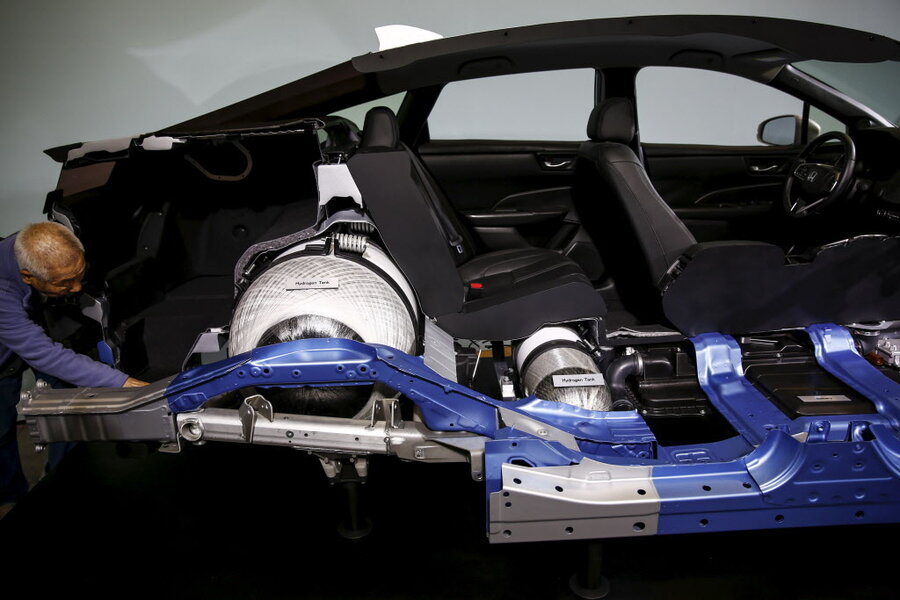Hydrogen for fuel-cell vehicles made from wind energy in Japanese test
Loading...
One of the big questions surrounding hydrogen fuel-cell cars is how to produce the hydrogen used to power them.
Mass adoption of fuel-cell vehicles would not only require much more hydrogen than is currently available, but hydrogen that is generated with minimal carbon emissions.
Today's hydrogen production methods increase a fuel-cell vehicle's overall carbon footprint beyond that of a battery-electric vehicle.
So Toyota is experimenting with using wind power to produce hydrogen for its Mirai sedan in Japan.
However, the carmaker hasn't quite gotten there yet.
It has a project to produce hydrogen using wind power, but only for fuel-cell forklifts, reports the Associated Press.
The hydrogen is produced at a wind-power plant in Yokohama, southwest of Tokyo.
It's then transported by truck to four nearby industrial sites, including a factory, a vegetable-and-fruit market, and two warehouses.
The trucks that transport the hydrogen also act as mobile fueling stations.
The project is a partnership between Toyota, the cities of Yokohama and Kawasaki, and the government of Kanagawa prefecture, with electronics company Toshiba and energy company Iwatani also involved.
In theory, the same wind plant could supply hydrogen for Mirai fuel-cell sedans, although there are still relatively few of those on Japanese roads.
Despite generous tax incentives for private buyers, the majority of Mirai sedans in Japan are reportedly leased for government or corporate fleet use.
In the U.S., Toyota has said it plans to deliver 3,000 cars by the end of 2017. As of last month, it had delivered 128 over five months.
The Honda Clarity Fuel Cell also recently went on sale in Japan, but won't arrive in the U.S. until later this year.
Japan's government plans to showcase hydrogen fuel-cell technology at the 2020 Tokyo Olympics.
That includes plans to build more hydrogen fueling stations, and put more fuel-cell vehicles into service.
It's part of a larger effort by Prime Minister Shinzo Abe to create a "hydrogen society," in which fuel cells are used to power buildings and infrastructure, as well as vehicles.
It's hoped that this will reduce Japan's dependence on imported oil, and provide an alternative to nuclear power in the wake of the Fukushima disaster.
This article first appeared at GreenCarReports.







